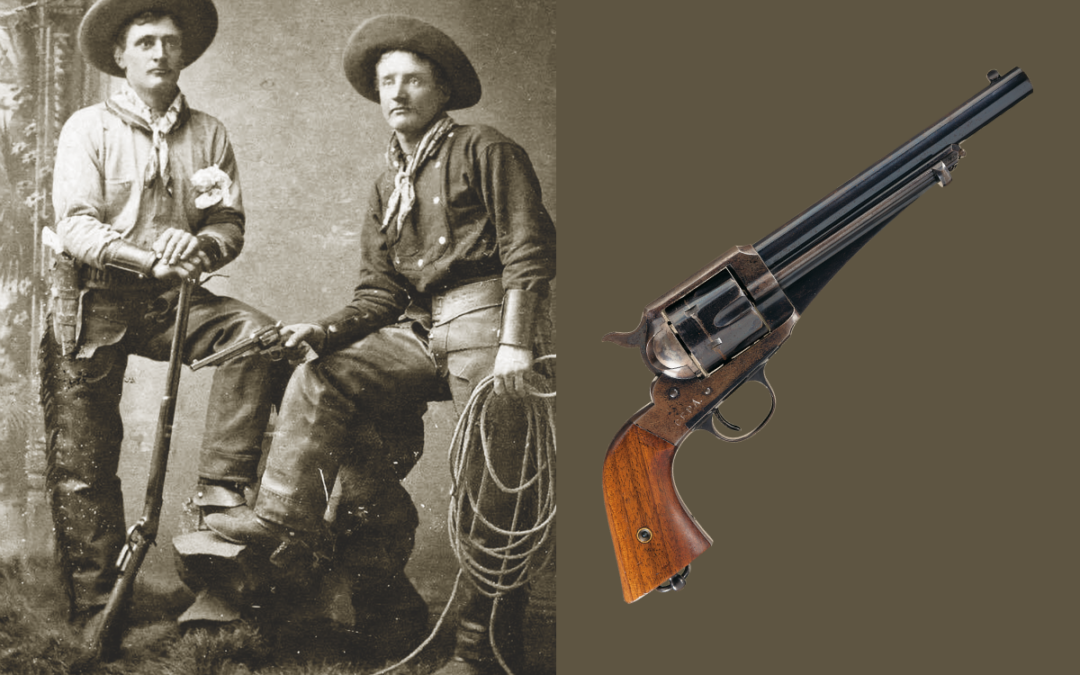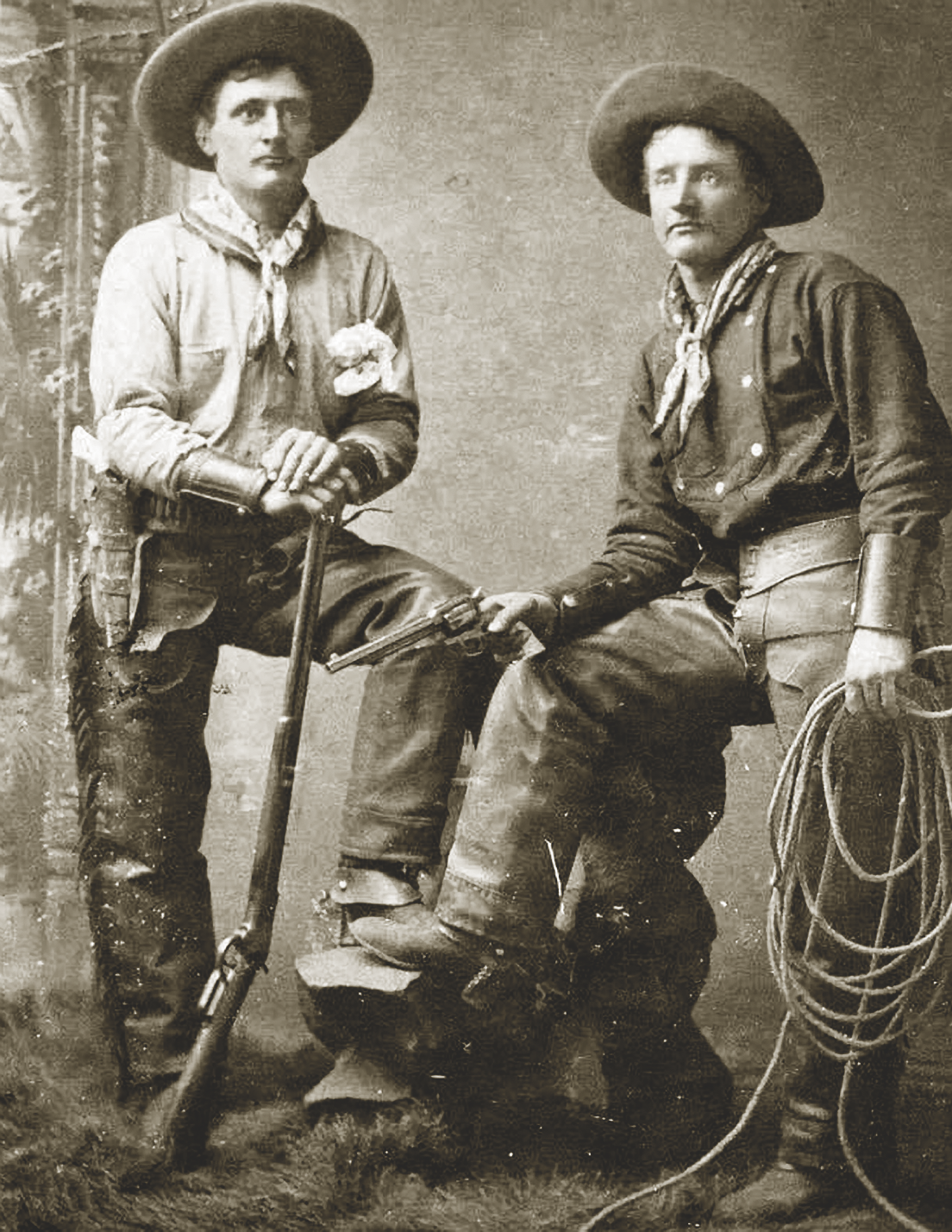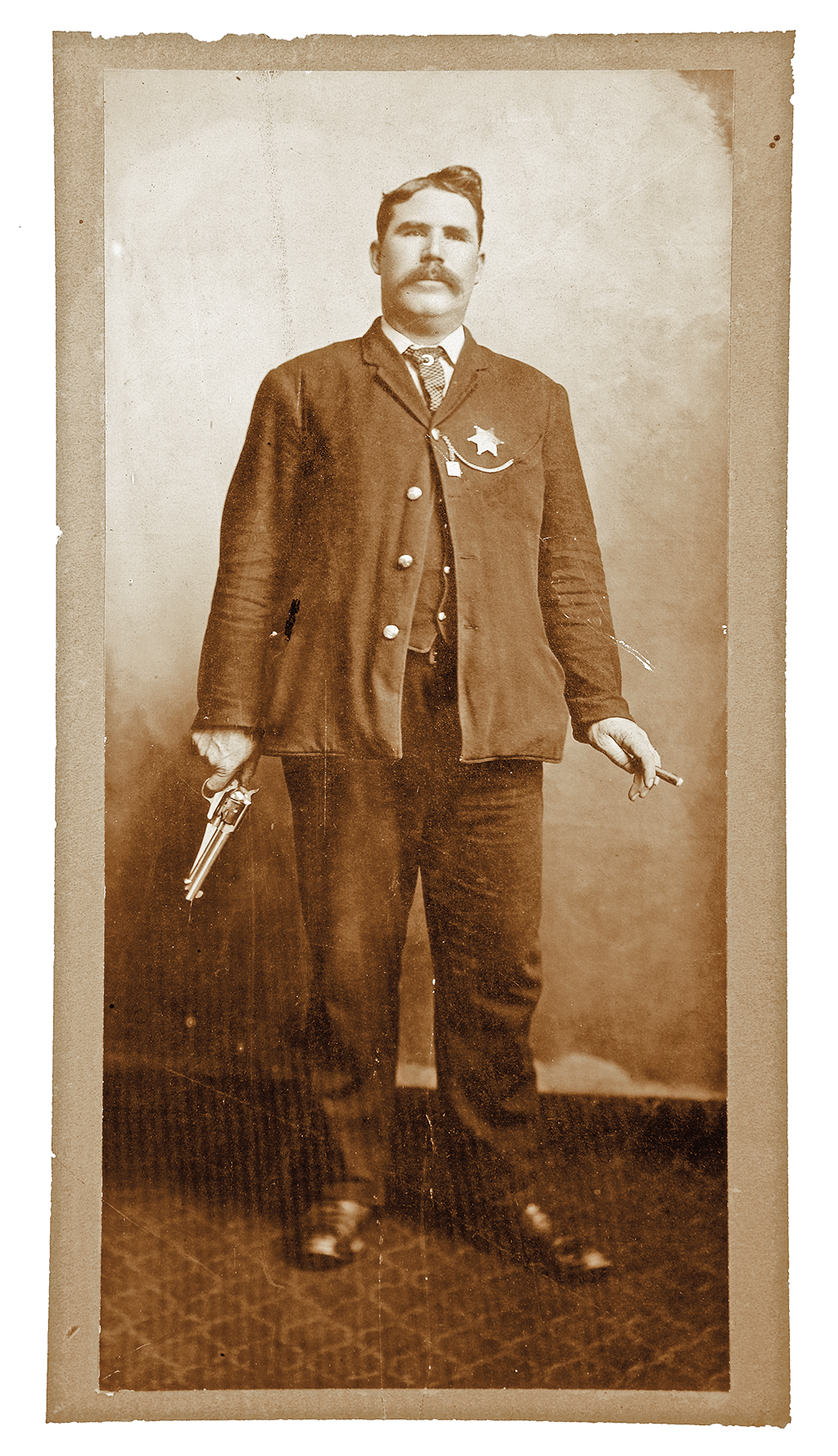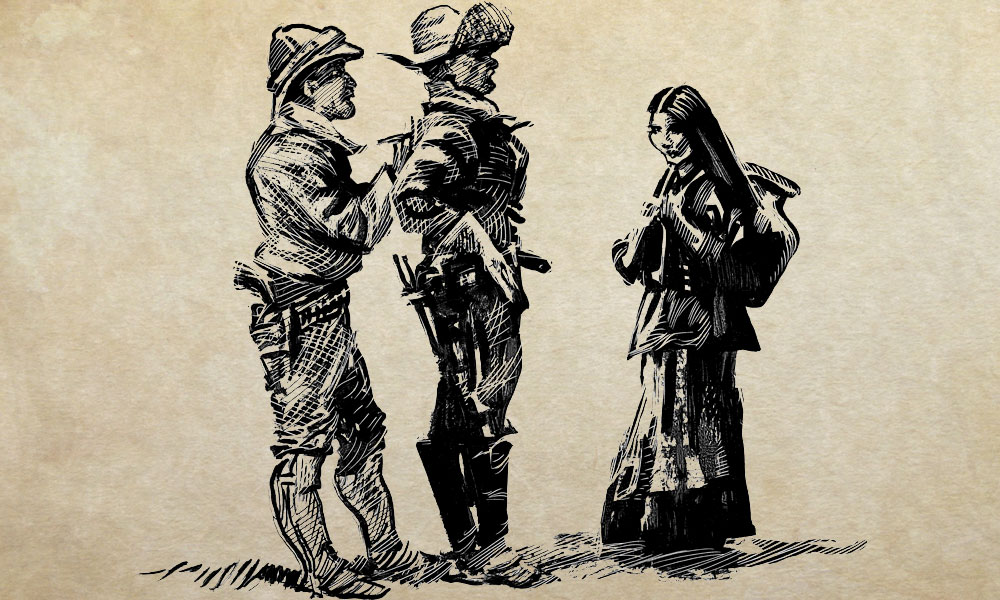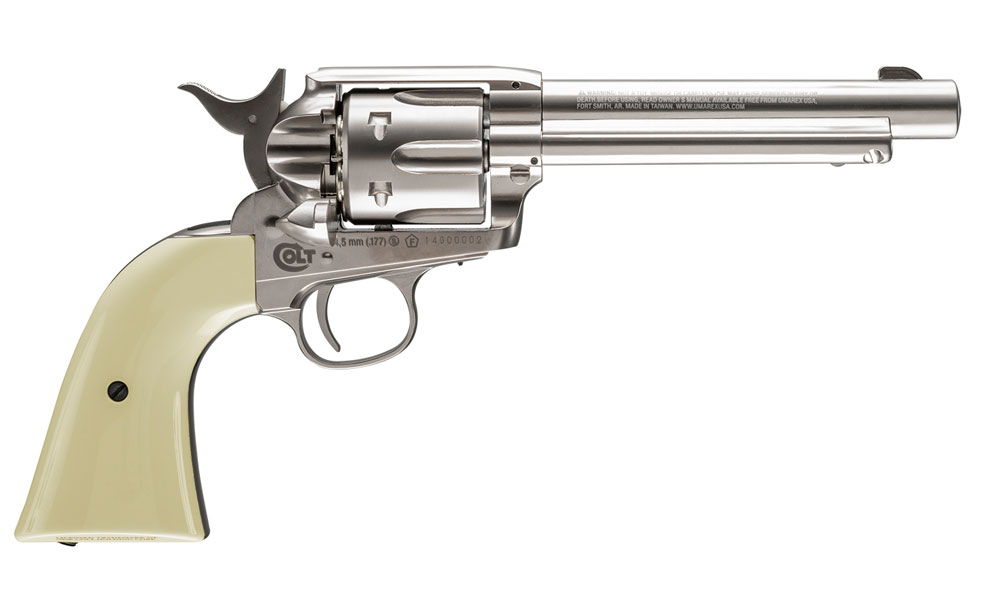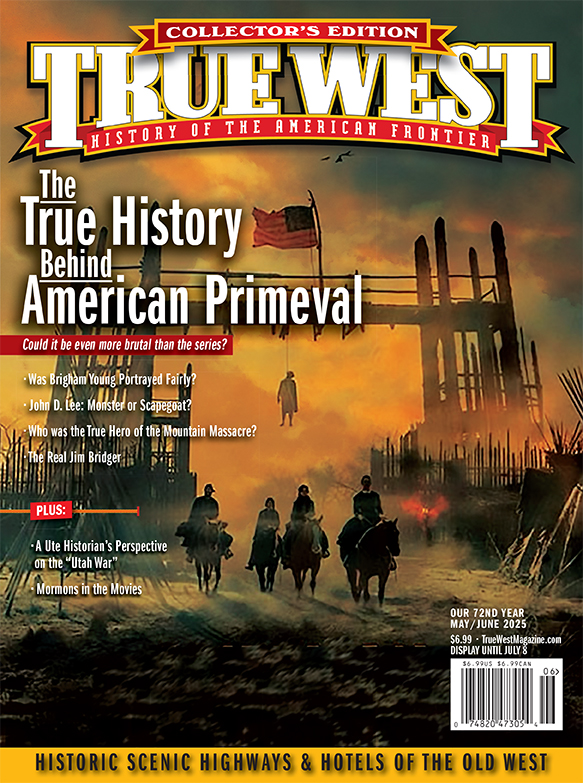This 1873 colt lookalike was a solid, hard-hitting revolver,
but it never could rival the famed six-gun it emulated
Among the trusted sidearms of the Old West, the 1875 Remington – seen here in the hand of the cowboy at right – earned a place on the hip of legendary figures including Frank James, brother of outlaw Jesse James, who favored it’s solid build and reliability after leaving the outlaw trail behind.
With the increasing number of emigrants heading to the frontier in the decade after the Civil War, a great demand for sturdy, reliable firearms resulted in a slew of new model firearms – especially handguns – being introduced. After Colt’s success in selling its 1873 single Action Army revolver, popularly known as the “Peacemaker.” to the U.S. government, it quickly became evident to the Hartford firm’s competitors that they needed to bring out a metallic cartridge “Army” or “holster” single action revolver of their own. Most of Colt’s rival companies manufactured six shooters that differed significantly from their offering. However, one manufacturer boldly entered that field with a revolver that bore much more than a slight resemblance to the popular Peacemaker Colt.
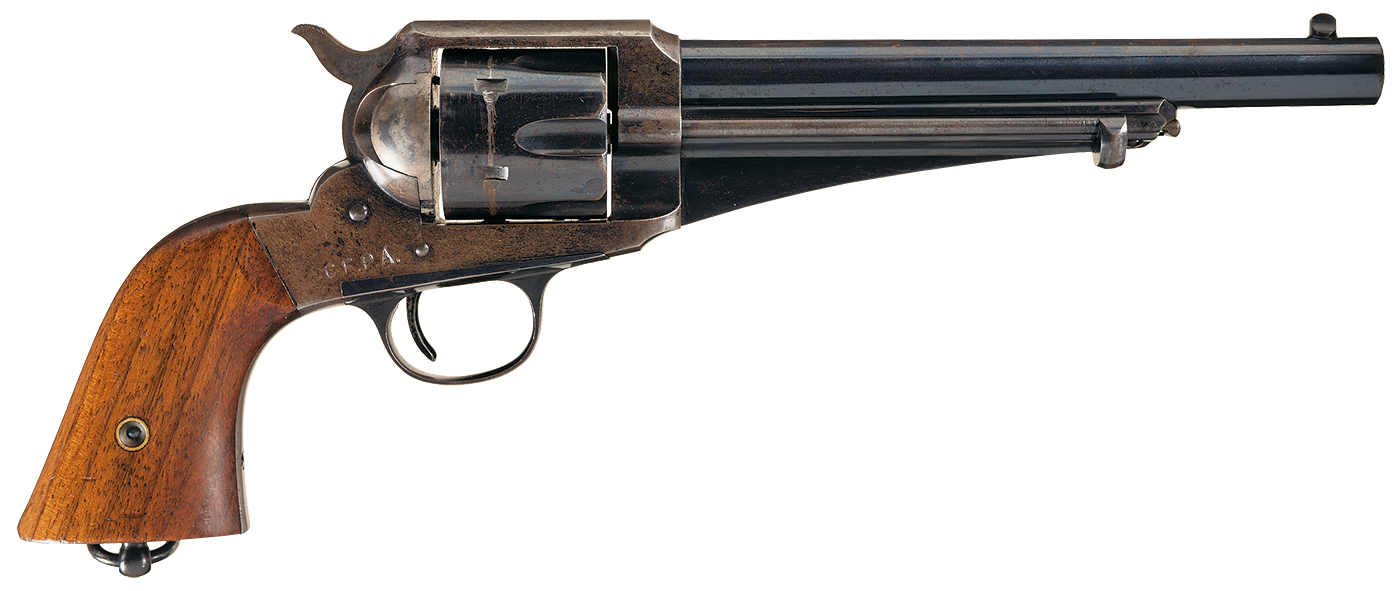
Distinct from it’s Colt counterpart, the 1875 Remington stands out with it’s webbed under-barrel assembly, longer frame to-grip distance and right-side ejector system. Note the ejector housing directly beneath the barrel and the extended cylinder base pin screw positioned in the fore section of the housing hallmarks of Remington’s unique designs.
Favored by frontier lawmen like Bill Tilghman and Bass Reeves, the Remington 1875 was a rugged sidearm issued to Indian Police and peace officers across the West, prized for its solid frame and reliable performance.
It was 150 years ago that E. Remington & Sons, of Ilion, New York, introduced its “New Model 1875” or “No. 3 Revolver”—almost an exact Peacemaker clone. In the fall of that year, with the hopes of competing with, or at least taking advantage of the ’73 Colt’s instant popularity, its 1875 model combined the lines of its sturdy cap-and-ball New Model Army and Navy revolvers with those of the 1873 Colt. The final result was a handsome marriage of the two designs. Actually, the biggest visibly significant differences between the two were the Remington’s webbed under-barrel assembly and a longer distance from the back of the frame and hammer area to the grip. Other variations include Remington’s ejector housing underneath the barrel, rather than at an angle off the barrel’s lower right side as on the Colt, and the ’75 Remington’s ejector head and rod operated from the right side of the barrel, rather than from the left as with the Colt. Finally, Remington’s longer cylinder base pin retaining screw is located in the fore-section of the ejector housing as opposed to the Colt’s shorter version, housed in the front of the frame itself.
Phil Spangenberger, who died last year, wrote for Guns & Ammo, appeared on the History Channel and other documentary networks, produce Wild West shows, was a Hollywood gun coach and character actor. He was True West’s “True Westerner of 2022.” He will be missed.

